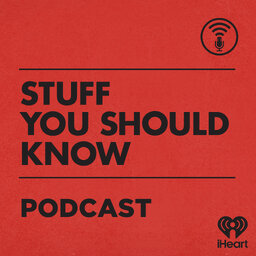How Avalanches Work
Each year, as snow builds on peaks across the world's mountain ranges, the potential for avalanches builds. Learn about the science of how these natural disasters develop and are triggered - and how to survive one if you ever find yourself trapped.
Learn more about your ad-choices at https://www.iheartpodcastnetwork.com
 Stuff You Should Know
Stuff You Should Know


